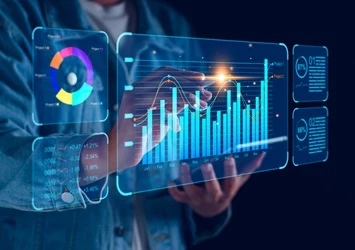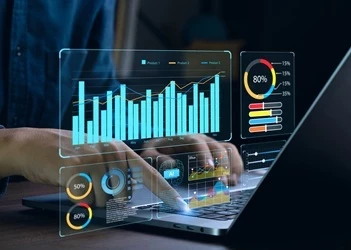Shell Dutch Oil: How Data and AI are Fueling the Future of Energy
The climate emergency is pushing big oil to reimagine their business models. Here’s a look at how AI and data analytics are helping to facilitate this evolution.
Add bookmark
With operations in over 70 countries, multinational Shell Dutch Oil produces around 3.7 million barrels of oil equivalent per day, operates around 44,000 service stations worldwide and employs over 86,000 people. Active in every area of the oil and gas industry - including exploration and production, refining, transport, distribution and marketing, petrochemicals, power generation, and trading - they are one of the world’s largest and most profitable companies.
However, staying ahead of the curve in an industry as complex and tempestuous as oil & gas is no easy feat. To maximize its near and long-term competitive advantage, Shell is investing massive amounts of money and resources into artificial intelligence (AI) R&D.
As Shell Research’s General Manager, Advanced Analytics CoE, Dan Jeavons, explained in a 2020 interview, “AI is at the core of our digital & data strategies. Most digital technologies create or consume data. AI provides the opportunity to create new insights from data by turning it into information. It also enables us to change our business processes by eliminating manual tasks. We see AI as a key enabler for value from digital technologies and have made an active decision to embed AI in every part of our organisation through the Shell.ai programme.”
He also added, “I think the real promise of AI is not related to one specific use case, but rather to the ability of the implementation of AI at scale to completely disrupt the way in which we do business.”
AI: The Key to Balancing Decarbonization with Stability
In February 2021, Royal Dutch Shell released its revised plans to achieve net-zero emissions by 2050. Over the next 30 years, Shell will not only need to effectively and sustainably manage its existing business lines, it will need to develop new, carbon-neutral product lines and prepare for a future where clean energy will likely be the norm.
In order to ensure they successfully balance both priorities, Shell partnered with Microsoft to co-develop “new technologies that will help them achieve their carbon reduction ambitions and deliver new solutions to market helping other organizations and customers manage and reduce their own carbon footprint.”
For example, Shell and Microsoft co-created a collaborative digital platform whereby Shell can not only track its own sustainability initiatives, but those of its suppliers as well. As explained in a Microsoft blog post, “this platform provides a very detailed and accurate sense of different business requirements and what an organization needs to do to reduce its emissions. Companies in a range of industries can use the technology to get a picture of baseline measurements, set goals, and develop plans to achieve them.”
Another project they’ve been working on: digital twin technology. Leveraging digital twin technologies from Kongsberg and AI platform technology from C3.ai, Shell engineers can generate a virtual picture of what’s happening across its businesses. As explained by Stefan Irrgang, Global Process Owner Integrity & Reliability Decision Executive Digital Twin, Shell, “This opens up a completely new way of performing optimisation, where the ultimate objective is to maximise gas and condensate production as well as minimise energy consumption, while reducing maintenance need and avoiding breakdown of equipment.”
And this is only the beginning. In March 2021, Shell along with C3 AI, Baker Hughes and Microsoft announced the launch of the Open AI Energy Initiative (OAI), a first-of-its-kind open ecosystem of AI solutions specifically. The long-term goal of this project is to not only drive digital transformation, but energy transformation - the evolution of the industry towards sustainable energy solutions.






























